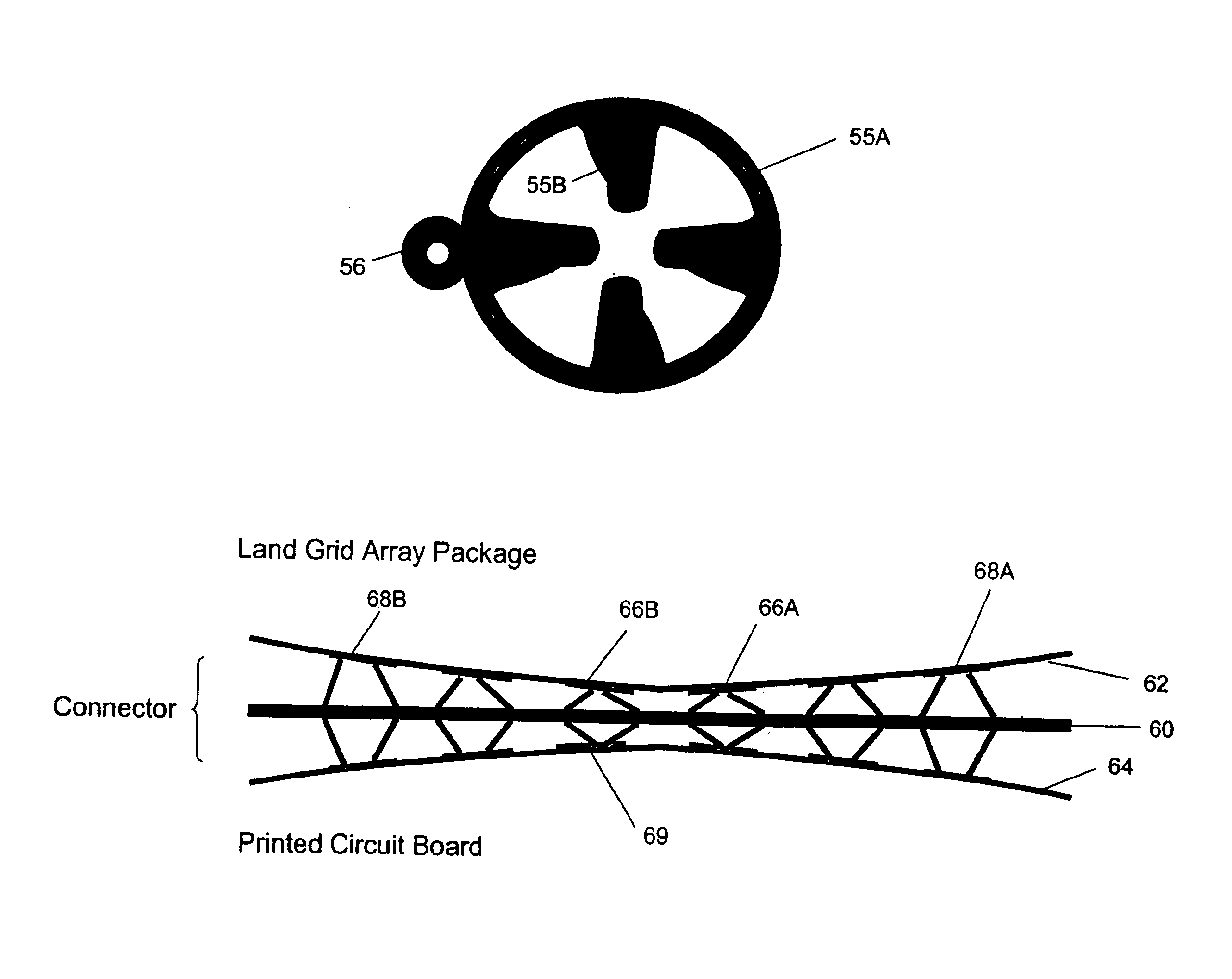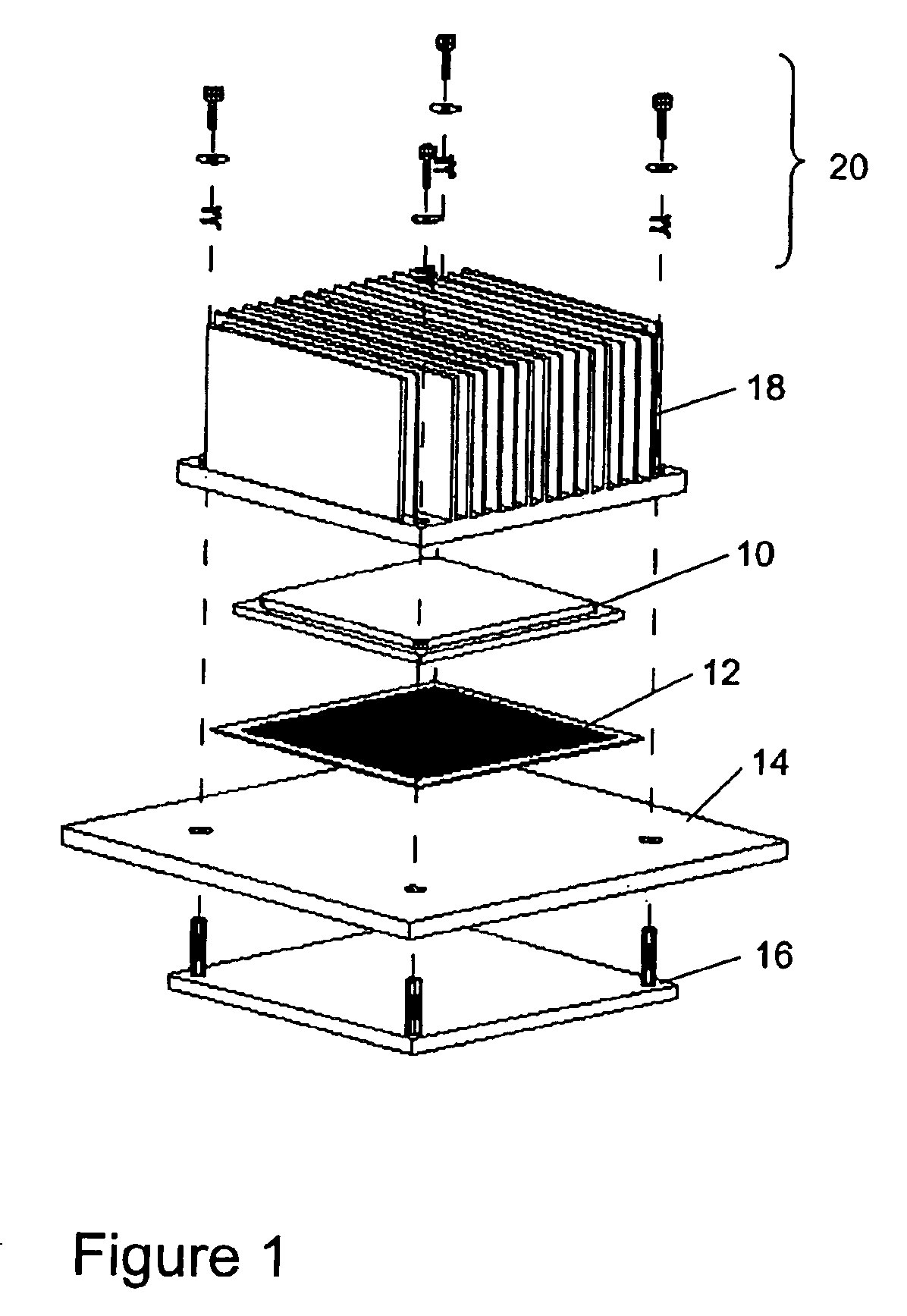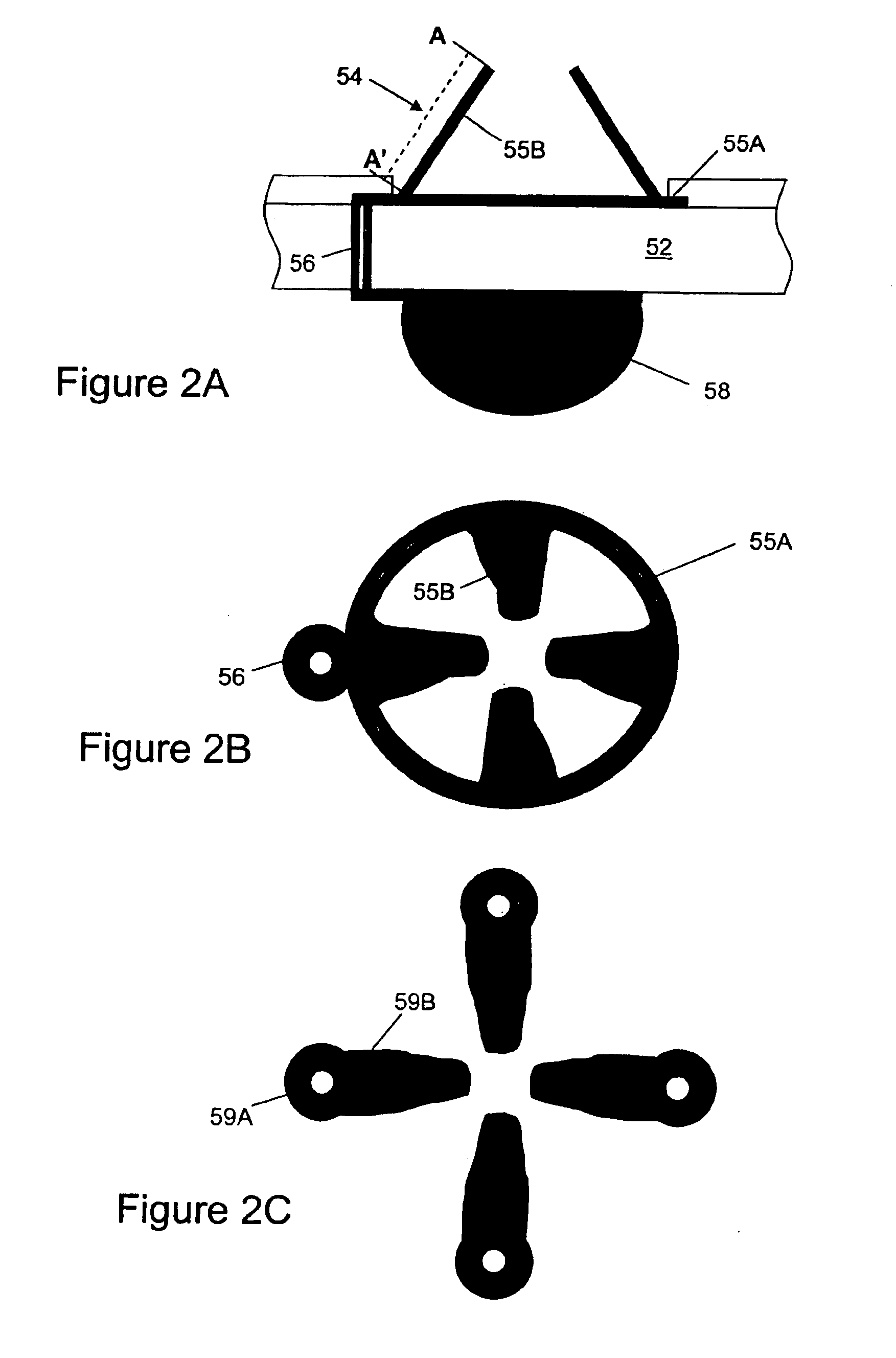Land grid array connector including heterogeneous contact elements
a contact element and connector technology, applied in the direction of elastomeric connection elements, printed element electric connection formation, coupling device connection, etc., can solve the problems of shrinking package geometries, increasing lead count, increasing mechanical, electrical and reliability performance criteria of interconnect systems, and increasing the number of lead counts
- Summary
- Abstract
- Description
- Claims
- Application Information
AI Technical Summary
Benefits of technology
Problems solved by technology
Method used
Image
Examples
Embodiment Construction
[0046]In accordance with the principles of the present invention, a connector for a land grid array (LGA) package or area array includes an array of contact elements formed on a dielectric substrate where each contact element includes an elastic portion having an elastic working range on the order of the electrical path length of the contact element. The large elastic working range of the LGA connector of the present invention allows the connector to accommodate coplanarity deviations or positional misalignment that may be present in most electronic components to be connected, thereby providing high quality and reliable electrical connection between electronic components. The connector of the present invention provides separable or remountable connection and is capable of retaining high quality electrical connection over repeated insertions. In one embodiment, the contact element is formed as metal flanges extending from a ring-shaped base.
[0047]The connector of the present inventio...
PUM
 Login to View More
Login to View More Abstract
Description
Claims
Application Information
 Login to View More
Login to View More - R&D
- Intellectual Property
- Life Sciences
- Materials
- Tech Scout
- Unparalleled Data Quality
- Higher Quality Content
- 60% Fewer Hallucinations
Browse by: Latest US Patents, China's latest patents, Technical Efficacy Thesaurus, Application Domain, Technology Topic, Popular Technical Reports.
© 2025 PatSnap. All rights reserved.Legal|Privacy policy|Modern Slavery Act Transparency Statement|Sitemap|About US| Contact US: help@patsnap.com



